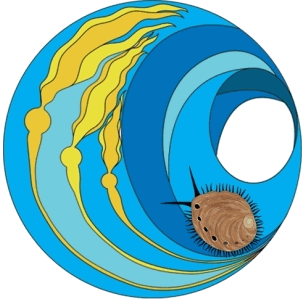Themes and Approaches
Themes

The Role of Interactions in Shaping Communities
Species exist within communities, where assemblages of multiple species within a given area interact. These interactions can have important consequences for the abundance, distribution and diversity of species across habitats and the overall structure and function of marine ecosystems. These interactions can be direct, such as predation (consumption), competition, mutualism or parasitism or indirect, as in the classic “trophic cascade”, e.g. where sea otters benefit kelp by eating urchins that graze on them. The understanding of how species interactions shape communities, and how environmental drivers mediated the strength and direction of these interactions, is an additional key to understanding how marine ecosystems are shaped. Photo: Patrick Webster, underwaterpat.com
Approaches

Laboratory Experiments
Laboratory experiments provide an arena to explore individual and interactive effects of environmental drivers on in the physiology, behavior, development, growth and behavior of individuals, as well as how abiotic factors mediate species interactions. In addition, results from the laboratory help us better interpret field studies and provide important information to parameterize models. This work encompasses a range of species (including primary producers, invertebrates and fish) and life stages (from gametes and larvae to adults) and utilizes facilities that control temperature, dissolved oxygen and pH, with the ability to simulate specific oceanographic conditions, such as upwelling. Laboratory experiments are not limited to biology and ecology; oceanographic flume studies provide insight into how physical forcing may affect important ecological and biogeochemical processes.




